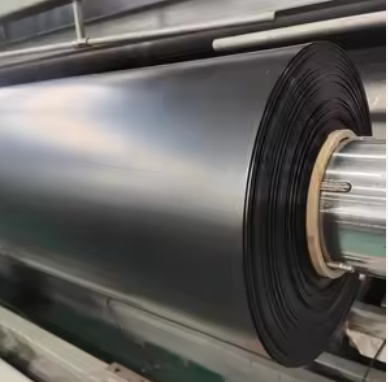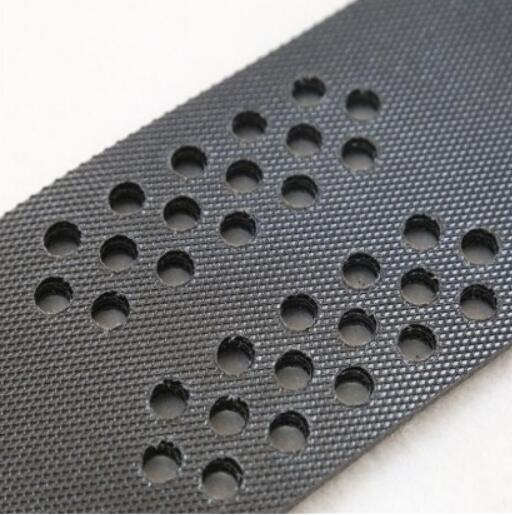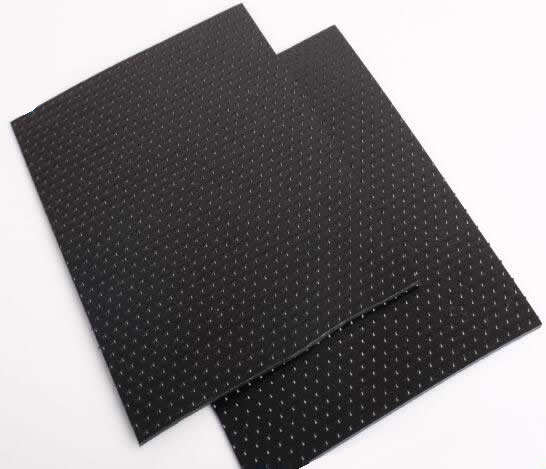- Understanding the Role of Geomembrane Liners in Waste Management
- Innovations in Geomembrane Liners for Water Management
- Geomembrane Liners: A Comprehensive Guide
- The Future of Geomembrane Liners in Civil Engineering
- Geomembrane Liners: Enhancing Landfill Stability
Manager:Alvin Wang
WhatsApp:+62 8983806051
Tel:+86 10-5797-1075
Email:steelwang@okorder.com
Address:3rd Floor, No.2 Building, No.1 Sanlihe Road
What is the difference between geotextile and geomembrane?
Geotextiles and geomembranes are major components used in soil stabilization, erosion control, and containment projects within civil engineering and environmental disciplines. However, the two materials differ greatly concerning composition, function, and application even as they perform important roles in infrastructure development. This article looks at the contrasts between geotextiles and geomembranes explaining their distinct characteristics in construction works.

Understanding Geotextile and Geomembrane
Geotextile:
Geotextiles represent permeable materials created from synthetic fibers like polypropylene or polyester or natural fibers such as jute or coir with specific fabric properties of filtration, separation, reinforcement and drainage. Geosynthetics that are commonly used in civil engineering include geotextiles which improve drainage services to protect soils from infiltration of water that may lead to instability of soils through erosion. woven geotextiles non-woven geotextiles knitted geotextile are some of forms available depending on project requirements.
Geomembrane:
On the other hand, geomembranes consist of impermeable liners or barriers employed to contain fluids i.e., liquids as well as gases or fumes so that these do not diffuse into surrounding environment. Generally, geomembranes consist of synthetic polymers like High-Density Polyethylene(HDPE), Low-Density Polyethylene (LDPE), Polyvinyl Chloride (PVC), Ethylene Propylene Diene Monomer (EPDM) besides Polypropylene (PP). They have good resistance to chemicals UV degradation and mechanical stressors thus making them suitable for lining landfills ponds reservoirs wastewater treatment plants among others.
Composition and Functionality
Geotextile:
Depending on their composition and characteristics, there are several types of geotextiles performing different functions. Some act as filters preventing migration of soil particles into drains while others separate different soil layers to avoid intermixing and yet some are used to consolidate soft grounds for improved strength. Geotextiles are permeable, thus allowing water through while retaining soil particles that enhance their efficiency in erosion control and soil stabilization.
Geomembrane:
In contrast, geomembranes are non-permeable barriers to the flow of fluid or gas. They are utilized for lining containment structures like tanks hence prevent leakage, seepage or contamination in construction projects especially those involving the environment and geotechnical applications. This ensures a secure barrier between the contained liquid and its surroundings protecting groundwater, soil and ecosystems against dangerous substances such as pollutants and contaminants. Consequently, their application in landfill liners is inevitable as well as pond liners, reservoirs and hazardous waste containment systems due to impermeability.
Applications and Uses
Geotextile:
Road construction embankment stabilization slope reinforcement erosion control landscaping drainage systems etc., represent just but a few uses of geotextiles common in civil engineering and construction projects. Enhancing soil stability controlling erosion managing water drainage help improve long-lasting performance of infrastructure projects. Various geotechnical problems can be solved using veritable materials i.e., geotextiles at affordable costs.
Geomembrane:
The major areas of application for geomembranes are where fluid containment is required coupled with environmental protection considerations. In this regard they find utilization in landfill liners which enable no movement of leachate through them during the process; Pond liners help keep water from getting out; Hazardous chemicals found in wastewater treatment facilities can be contained by geomembranes; And finally industrial containment systems can be manufactured to ensure minimal fluid leakage or contamination. These materials contribute significantly towards ensuring compliance with regulations promoting public health safety, as well as conserving environment during implementation of any environmental engineering project or work.
Material Properties and Selection Criteria
Geotextile:
Geotextiles are selected on the basis of specific qualities such as permeability, tensile strength, resistance to puncture and durability. The choice of geotextile is influenced by soil type, project requirements, hydraulic conditions as well as environmental considerations. For applications requiring high strength and filtration properties, woven geotextiles are preferred while non-woven geotextiles are used for drainage and separation functions.
Geomembrane:
The choice of geomembranes depends on their material composition, thicknesses chemical resistance, mechanical properties among other factors. The selection of geomembrane is determined by containment application, fluid type, environmental conditions and regulatory requirements among others. hdpe Geomembranes have become widely used because of their durability flexibility and chemical resistance; whereas pvc geomembranes have excellent UV degradation and hydrocarbons’ resistance. This means that the appropriate geomembrane thickness will be determined based on project specifications hydraulic conditions as well as performance criteria.

Conclusion
In conclusion, although they perform different roles in civil engineering works and environmental projects geotextiles as well as geomembranes are important constituents of geosynthetic systems. Geotextiles provide soil stabilization through removal of waste water thereby enhancing filtration processes; reinforcement facilitates better control over erosion. On the other hand, the role played by a geomembrane is acting like an impervious membrane that confines fluids within particular zones without allowing any contamination to occur thus ensuring preservation of environments within these areas for example in landfills etc. Engineers including project participants must understand this difference so that they can choose materials with confidence for infrastructure development taking into account desired outcomes around efficiency lifetime span together with ecological concerns.
- Previous:What is the difference between HDPE and LLDPE geomembrane?
- Next:How long does it take HDPE geomembrane to degrade?
-
2024-12-05Geomembrane Liners: A Comprehensive Guide






